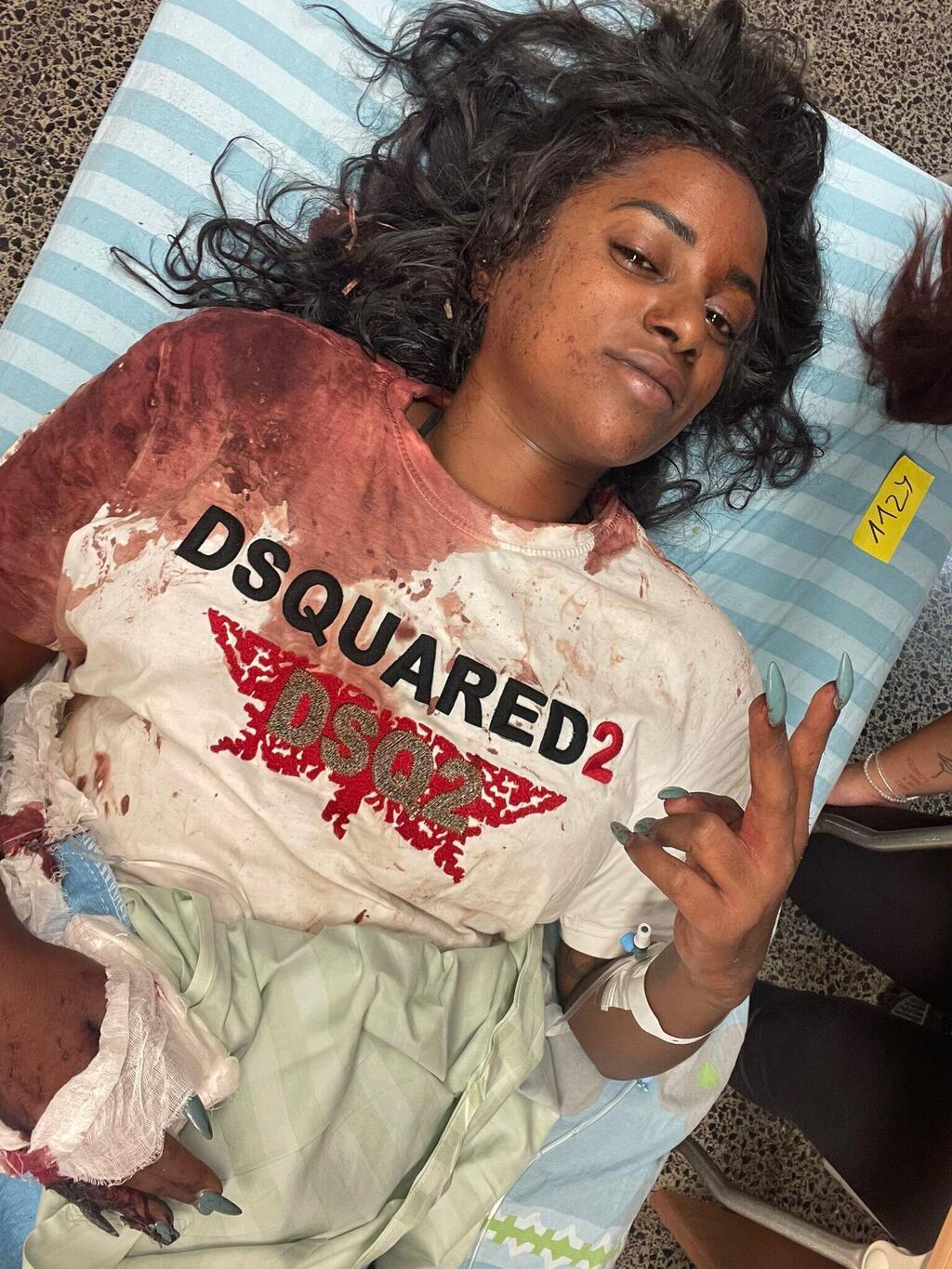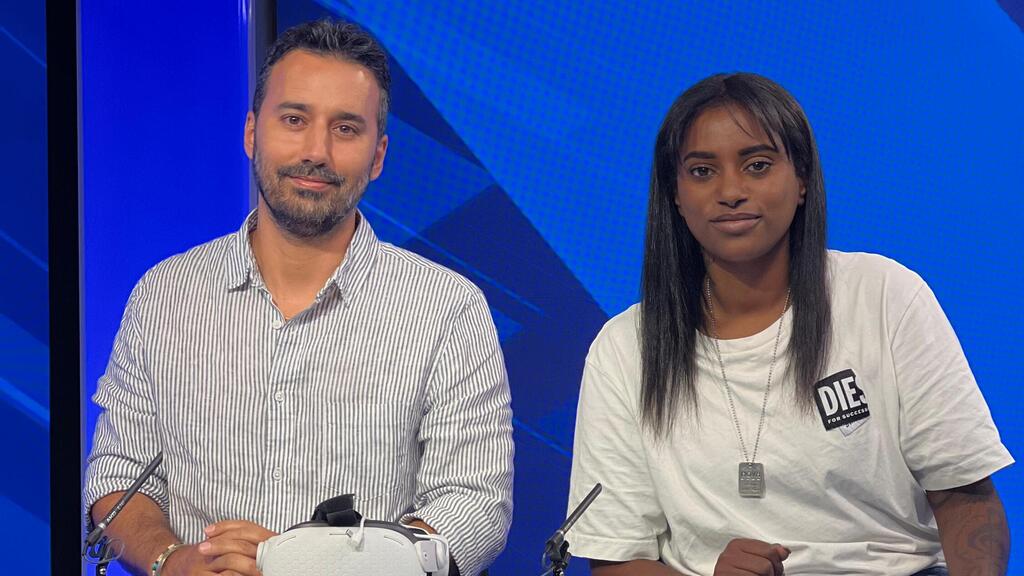Getting your Trinity Audio player ready...
On October 7, Mazal Tazazo was attacked by terrorists while trying to escape the Nova music festival with her friends. "We managed to reach Route 232, what we now call the highway to hell, and tried to evade them in every possible way, including getting out of the car and hiding behind bushes near the road. Unfortunately, we couldn't conceal ourselves," she recalls of that horrific day.
"I was struck on the head with a rifle butt, and my friends were murdered," she continues. "The terrorists then set the area on fire, and I had to choose between burning to death or being shot. I decided to flee from the flames toward the road and sat in the car for two hours until, around 3 p.m., an angel—another Nova survivor—came and drove me and four other survivors to safety."
Such a situation requires making life-and-death decisions in mere seconds.
"Absolutely. In those moments, you don't think about your actions; you operate on autopilot. At that time, I didn't even grasp the reality of what was happening. It felt like a hallucination, and all I could do was pray to God to end the madness. It felt like a movie, but unfortunately, it was a painful and brutal reality."
Nearly nine months after the deadly terror attack she barely survived, Mazal is participating in a public awareness project by ISRAEL-is, using VR (virtual reality) technology.
Alongside Mazal, five other survivors from the October 7 massacre are involved, aiming to raise global awareness of the atrocities committed by Hamas terrorists in the southern region. "Since the war began, we've been working around the clock, fighting on the global public relations front through various projects. Our goal is to raise international awareness of the massacre Hamas carried out here and to connect Jewish communities worldwide to their Zionist identity, especially in light of the relentless antisemitic attacks they've faced since the war's outbreak," says Nimrod Palmach, ISRAEL-is CEO and the project's initiator.
"VR is our flagship project," he adds. "It allows viewers to experience, in some way, the journey each of the five survivors went through on that terrible Saturday, whether in the battles in the southern region or during the escape from Nova, helping them understand what happened that day and the evil people had to confront."
Who are you presenting the project to?
Nimrod: "We're taking the VR project on missions worldwide—we've already been to London, Australia, New York, and more. During these missions, we showcase the project to the local community, students, parliament members, media experts, and key figures in the country."
Besides being the organization's CEO, Nimrod is a reservist who fought in Be'eri on October 7 and is also part of the new project. Like Mazal, he shares his story of heroism, frequently recounting the events of that dreadful Saturday.
"That morning, I was actually dispatched to Jerusalem. During the drive, I tried to gather information about what was happening in the south, and from the little I could understand, combined with a gut feeling, I decided to change direction and head south," he recalls. "I reached the Netivot area, with only a handgun on me. Along the way, as the events became clearer, I managed to record a farewell video for my children because I was convinced I wouldn't survive the day.
"When I arrived in the southern region, I joined several other soldiers and entered the battle," he continues. "We fought for several hours at the entrance to Kibbutz Alumim, preventing the terrorists from infiltrating. From there, we moved on to Be'eri and were part of the kibbutz's liberation."
No outsider can fully understand what you went through, yet you decided to share it with strangers worldwide. What motivated you to do that?
"This project was born while I was fighting in Be'eri, in the midst of the harrowing situation with the hostages held by the terrorists. Amidst the surreal scenes, chaos, and terror, I briefly reverted to my PR mindset and realized that, in addition to the front in Gaza, Israel would have to face another front: the public relations front. It was clear to me that ISRAEL-is and other Israeli PR organizations would need to fight this battle with all their might, confronting rising antisemitism."
Why did you choose to combine technology with survivors
"My team and I realized that if Mazal and I traveled the world sharing our stories non-stop, we’d quickly exhaust our energy. This led to the idea of combining the power of personal stories with technology, enabling viewers to feel part of the event. People who watch Mazal’s story in VR feel as if they’re hiding behind the bushes with her. It’s incredibly powerful."
Mazal, can you describe what viewers see in your video?
"Wow, it’s crazy and hard to put into words the feeling people have after watching it. They truly feel like they’re there with me, running between the trees and on the road, surrounded by dozens of armed terrorists and everything burning. And later, when I lay next to the bodies of my friends who were murdered before my eyes. When I watch it, I can’t believe it was the reality I faced that day, so imagine how others who weren’t there feel."
"There are many people worldwide who deny these events happened, probably because the human mind can't comprehend that someone could commit such horrific atrocities," she adds. "But it did happen, and our goal is to bring this reality, with all its harshness, right to their faces."
How do people react after watching the video?
"So far, I haven’t encountered anyone who was indifferent to it. When I watch them while they have the VR glasses on, I can see they’re completely with me, experiencing the moments of terror and fear alongside me. Then, after they finish watching and take off the glasses, it’s clear something has changed in them."
Nimrod, as a PR professional, do you notice the gap Mazal mentioned—between hearing a story and experiencing it through VR?
"Absolutely, we’re essentially bringing viewers to the scene, allowing them to be part of the horrors that occurred there, and by doing so, we’re trying to make them develop empathy for the survivors, for all of us. The combination of powerful personal stories and technology is proving to be extremely effective. People have a very strong experience while watching, so much so that we decided, in collaboration with the Sderot municipality, to establish a dedicated visitor center for this."




